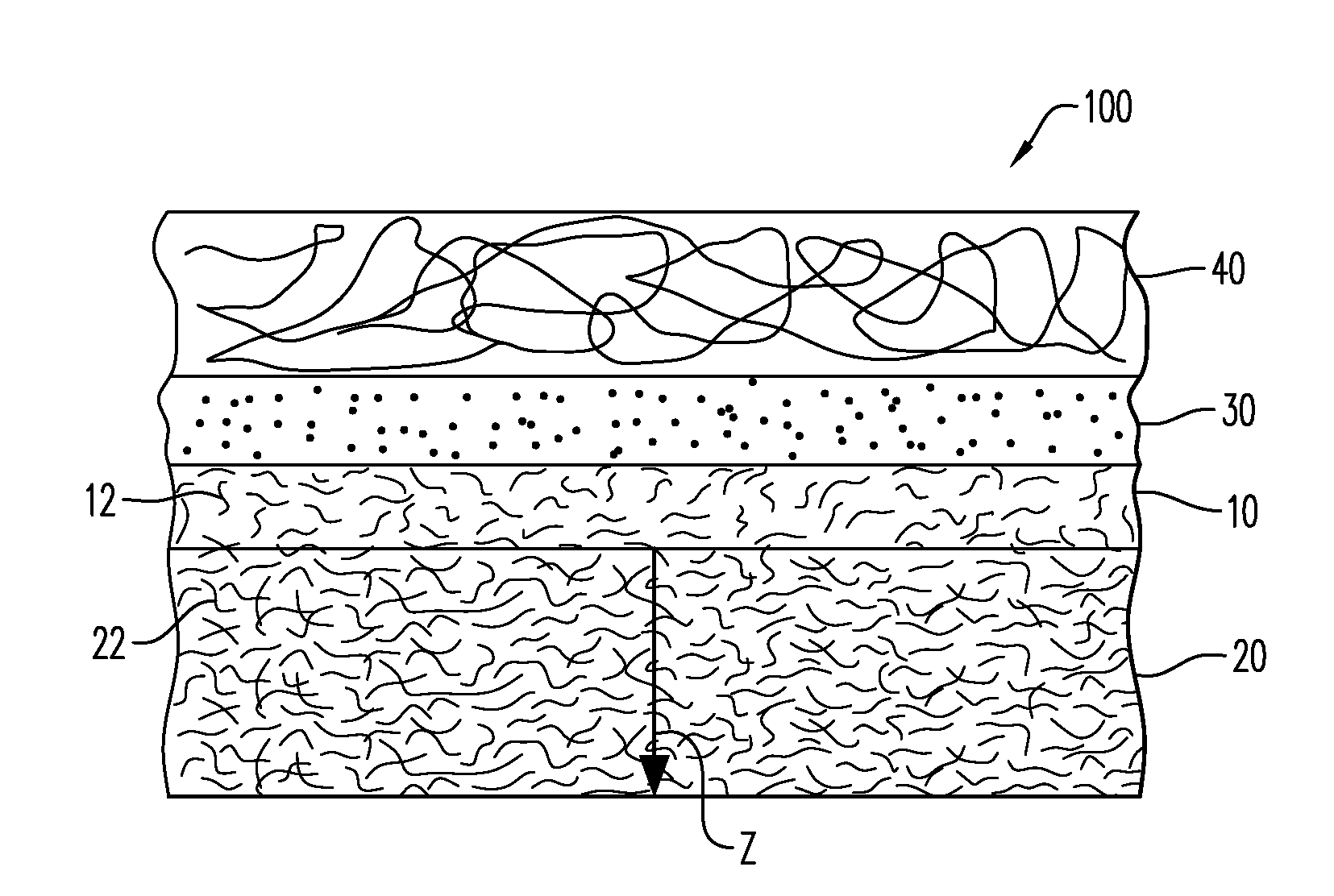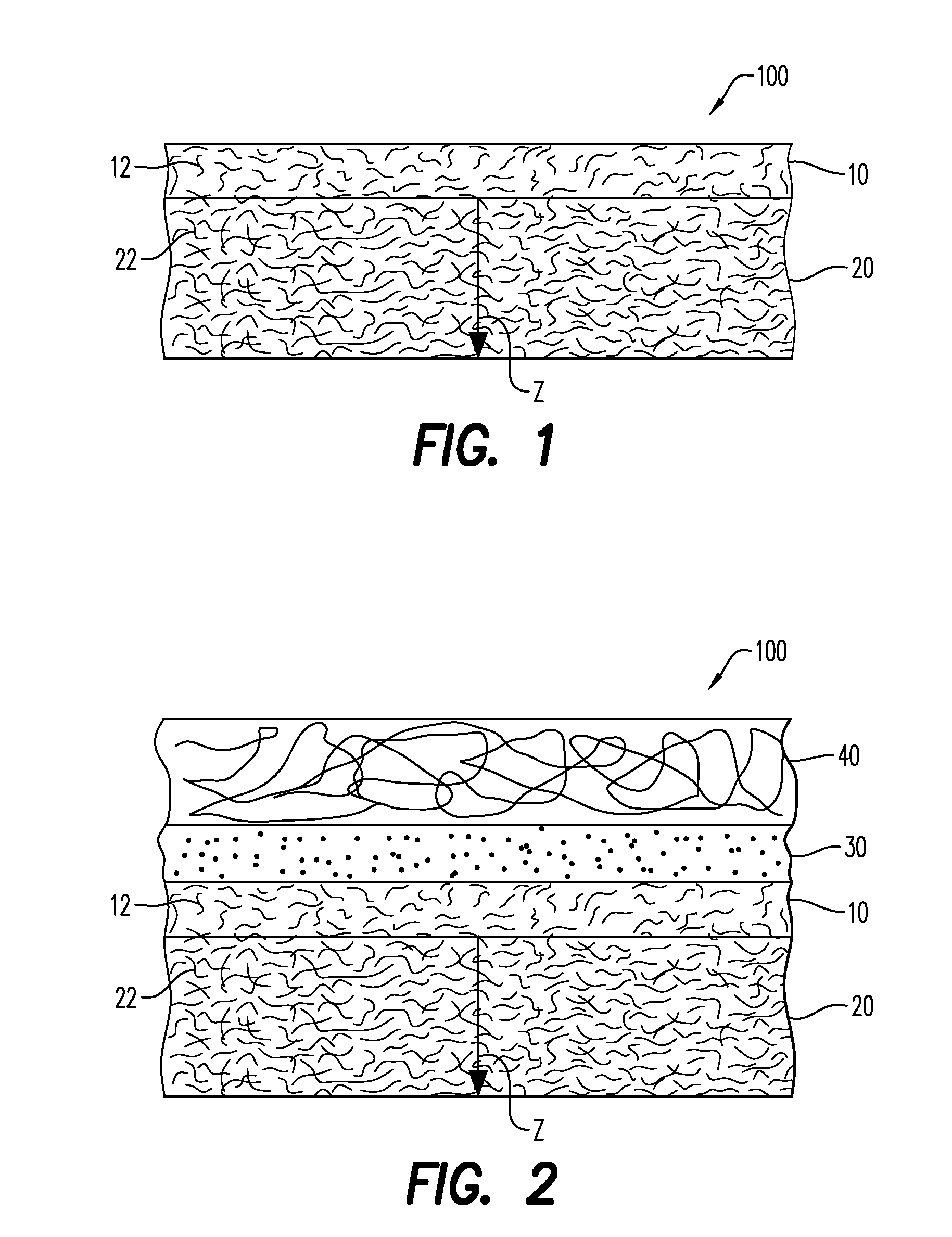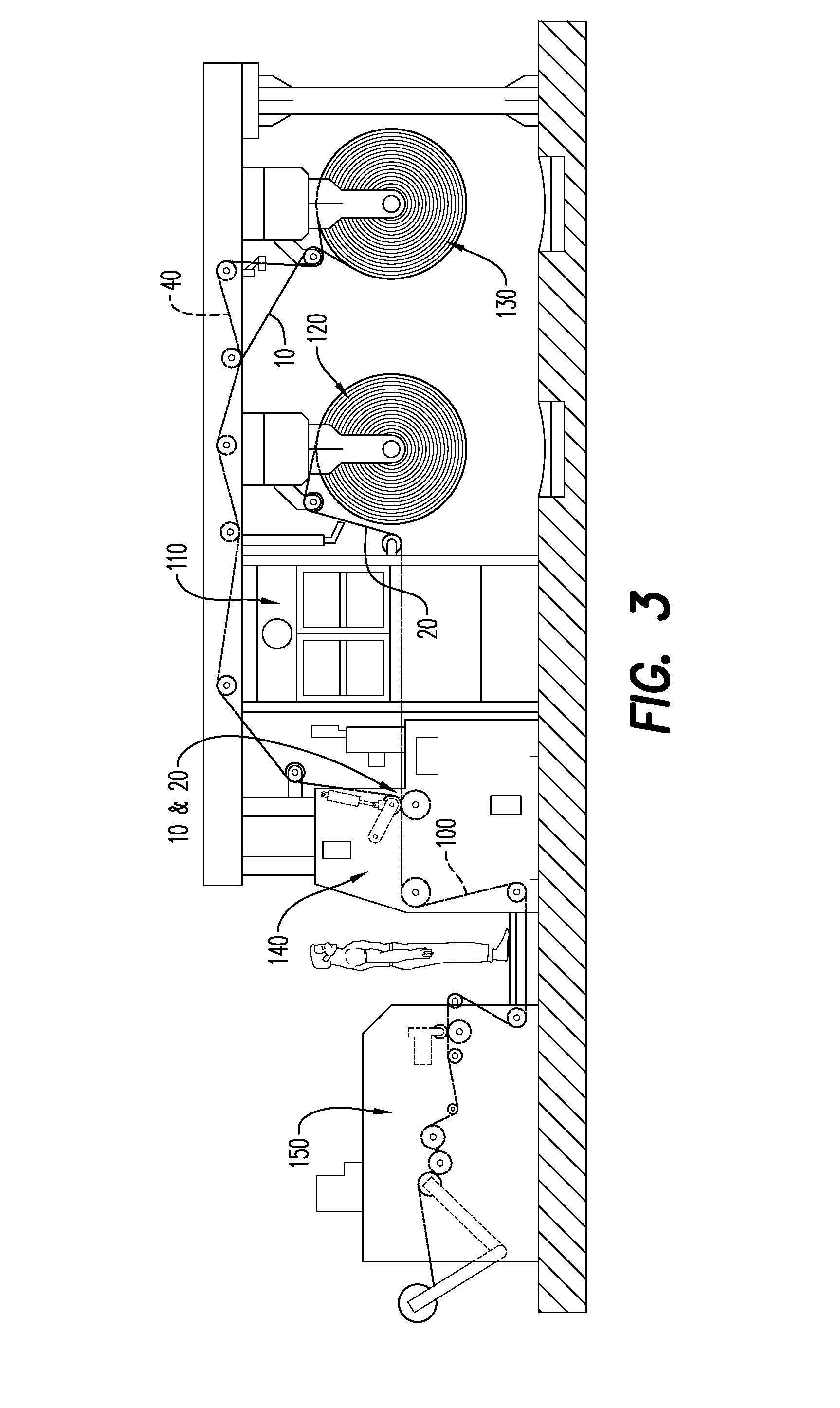Composite filter media including a nanofiber layer formed directly onto a conductive layer
- Summary
- Abstract
- Description
- Claims
- Application Information
AI Technical Summary
Benefits of technology
Problems solved by technology
Method used
Image
Examples
examples
[0065]Samples of the composite filter medias 100 according to an embodiment were prepared in which a wet-laid nonwoven conductive layer 20 was made using 75 wt. % polyethylene terephthalate staple fibers of about 6.0 denier and / or 25.0 micron fiber diameter, and 12 to 24 mm lengths, 7.0+ wt. % carbon fibers of about 0.7 denier and / or 7.5 micron fiber diameter, and about 6.0 mm length, and 19 wt. % acrylic-styrene copolymer binder. The conductive layer 20 was made using an inclined wire wet laid process, as would be understood by one of ordinary skill in the art, and with a typical drying and curing oven to complete the forming system. The conductive layer 20 had a basis weight of 51 gsm, a thickness of about 0.007 inches, a stiffness of about 500 mg, an alpha of about −7 microsiemens. The nanofiber layer 10 was made from solution spun polystyrene fibers having a diameter of about 300 nm using the solution spun process described hereinabove and was formed directly onto the wet-laid n...
PUM
| Property | Measurement | Unit |
|---|---|---|
| Diameter | aaaaa | aaaaa |
| Volumetric flow rate | aaaaa | aaaaa |
| Electrical conductance | aaaaa | aaaaa |
Abstract
Description
Claims
Application Information
 Login to View More
Login to View More - R&D
- Intellectual Property
- Life Sciences
- Materials
- Tech Scout
- Unparalleled Data Quality
- Higher Quality Content
- 60% Fewer Hallucinations
Browse by: Latest US Patents, China's latest patents, Technical Efficacy Thesaurus, Application Domain, Technology Topic, Popular Technical Reports.
© 2025 PatSnap. All rights reserved.Legal|Privacy policy|Modern Slavery Act Transparency Statement|Sitemap|About US| Contact US: help@patsnap.com



